1832 folded stampless letter from Bytown to Quebec City

First brass hammer used in early Ottawa from May 26, 1829 until September 27, 1832. Folded letter contains title conveyance documents and is address to Lord Aylmer, Governor General of Canada and Commander of the Army, 1830-1835. 1 Shilling 2 Pence, pays the letter rate for a distance of 300-400 miles, in black, indicating the fee to be collected from the receiver. Ref: RF Narbonne Exhibit: Postal History in the Bathurst District of Upper Canada ORAPEX 2009
First day of use of the Victoria Jubilee Flag cancel
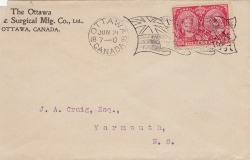
This is the earliest example of the 1837 - Victoria - 1897 Jubilee Flag cancel used in Ottawa with a Jubilee stamp. The Queen Victoria Jubilee stamps of Canada were first issued on June 19, 1897. This pictorial flag cancel, considered by many as Canada's prettiest flag cancel was used in Ottawa and Montreal from June 21st until July 10th, 1897. It is Canada's first commemorative machine flag cancel used to celebrate Queen Victoria's Diamond Jubilee. Ref: Doug Lingard's Canandian Flag Cancels 1896-1919, 2nd edition July 1995.
First stamp of Poland issued under Russian Dominion in 1860
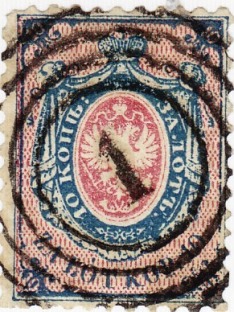
Poland was given its own postal service in 1858. This 10 kopek value stamp printed in Warsaw was issued in 1860 incorporating the Russian two-faced Romanov eagle. The eagle has been Russia's coat of arms since the 15th century. The 10 kopek stamp paid the rate of a single letter weighing less than a lot (approx. 1/2 ounce) mailed within Russia and the occupied Polish Territory. All letters to foreign destinations were paid in cash. The concentric ringed "1" cancellation represented Warsaw itself. In 1863 the poles rose up against Russia and their postal freedom was lost. The printing works shut down and Russian stamps were again introduced. Poland did not issue their own stamps again until after World War I.
Cape of Good Hope 4 pence Triangle paid the domestic letter rate.
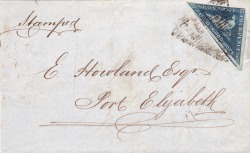
This folded envelope was mailed from Grahamstown to Port Elizabeth on Feb 5, 1863. A Grahamstown Oval dispatch dated post mark and a Port Elizabeth receiving dated post mark, both in red are stamped on the back of this letter. This stamp is from one of the last shipments of the Perkins-Bacon printings sent to the Cape.
The Major Re-entry of the 5 cent Beaver stamp of 1859 - Pos. 28
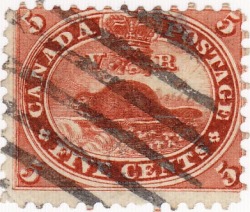
This is considered one of the most striking re-entries found on any engraved stamp of Canada. The strong doubling in the oval frame of the vignette as well as in the lower left numeral 5 are easy to see. Re-entries such as this one are created at the time the design is entered onto the softened steel plate. The hardened dandy roll or transfer roll with a relief of the design taken from the engraved die is rocked into the various positions on the plate. If the dandy roll was rocked in twice then a doubling of the design can be found in that particular position, in this case position 28. Many re-entries can and did often occur though few are as obvious as this one. It is interesting to note that most of the examples of this major re-entry are found on this deep vermillion shade.
Dramatic shifted error of Canada's Isle of Spruce by Arthur Lismer
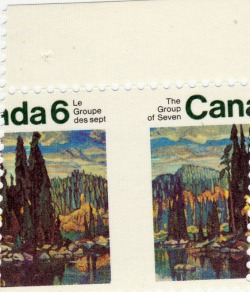
The Isle of Spruce stamp , printed by one of the Group of Seven painters and issued on September 18 ,1970 is the first stamp printed by Ashton-Potter. There were some obvious printing problems, especially with the alignment of the perforations. This is an example of one of the more dramatic shifts with the gutter spliting the stamp in have. The perforations are also on a bit of a diagonal. This example should have been treated as printer's waste. It never should have been released to the public. Did it slip out the back door? I wonder. Another shifted example is for sale in our ebay store http://stores.ebay.ca/Capital-Philatelics